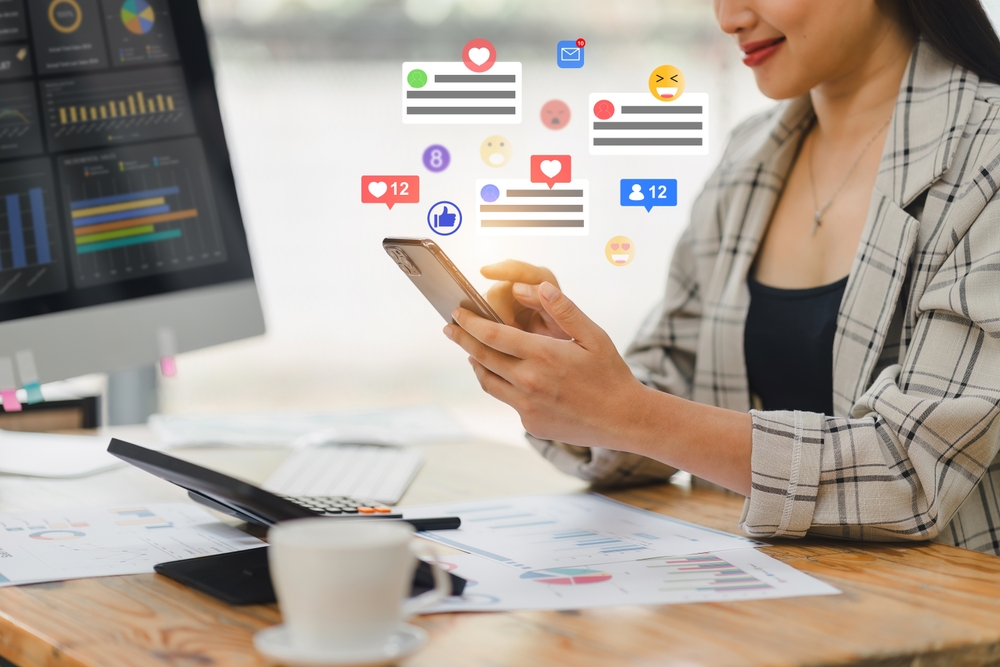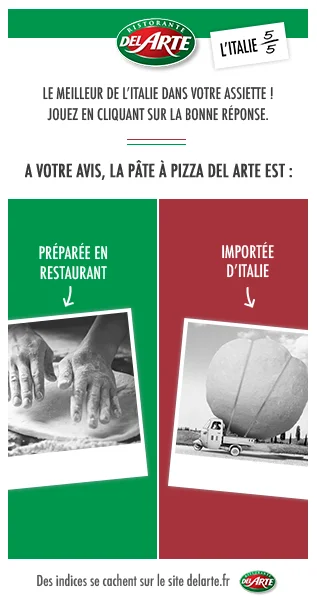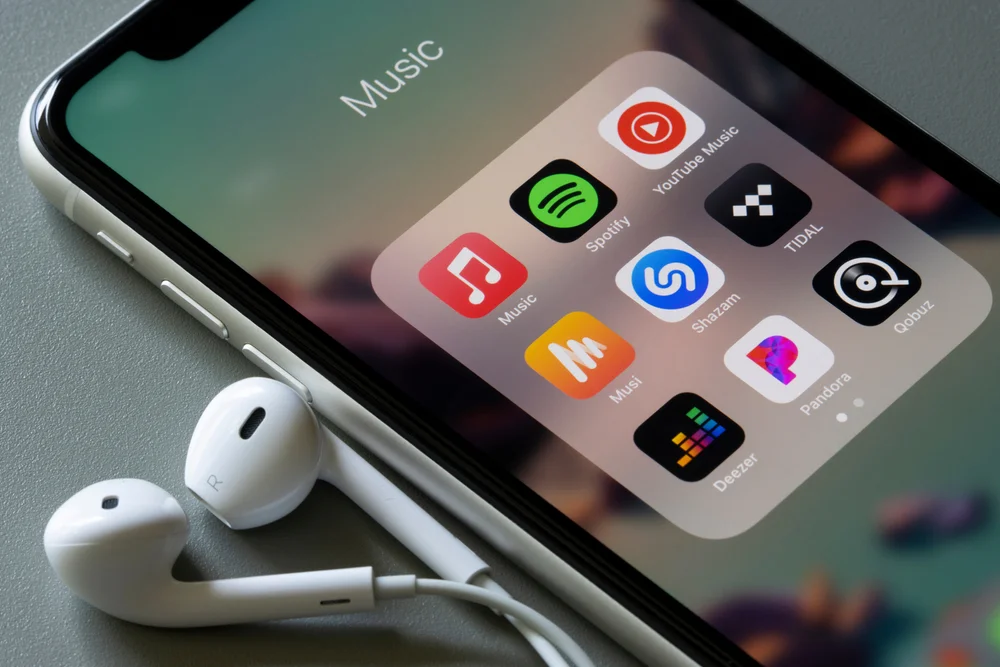In France, consumers are exposed to an average of over 1,200 advertising messages a day. Between television, social networks, online banner ads and mobile notifications… Advertising fatigue is a palpable reality for the vast majority of Internet users. For marketers, this saturation makes it easier to engage their target audience.
This is were programmatic advertising comes in. By automating the purchase of advertising spaces, it makes it possible to target the right people with the right messages, at the right time and on the right channel.
In this article, we take a closer look at the benefits and challenges of programmatic digital advertising. We share the best practices for getting to grips with this marketing tool, and focus on gamification in programmatic advertising.
What is programmatic advertising?
Programmatic advertising is a method of buying and selling online advertising space.
It relies of the use algorithms and automation technologies to deliver ads in a more targeted and therefore more effective way.
Rather than negotiating manually with a publisher (as is the case in traditional marketing), advertising space is purchased in real time on specialized platforms called DSPs (Demand-Side Platforms), often via automatic bidding. The best-know of these is Google Display & Video 360, which offers premium access to inventory from YouTube, Google Ads and other partner networks.
Programmed digital advertising is based on RTB (Real-Time Bidding), a process whereby each advertising impression is sold in milliseconds to the advertiser best aligned with the defined criteria.
The benefits of programmatic advertsing
Programmatic advertising fills many of the gaps left by traditional digital marketing methods. Here are the main advantages for advertisers.
Data hyper-targeting
Traditional marketing campaigns often rely on basic demographic data (age, gender, location), which limits the precision of targeting.
By integrating behavioral and contextual data,
collected and updated in real time (such as searches or purchase history), programmatic advertising makes it possible to target ultra-precise segments. For example: “women aged 30-35 in Paris, looking for a stroller in the last 24 hours.”
Automated ad buying
Buying advertising space used to be a huge waste of time for marketers if they wanted to react as quickly as possible to market developments or buying trends.
Thanks to automation, campaigns can be adjusted in real time to maximize results. Brands can, for example, create automations to increase bids on high-performing locations.
Optimizing advertising budgets based on ROI
Before programmatic advertising, marketing budgets were often allocated to channels without any real tracking of performance, which could lead to a misallocation of ressources.
Campaign performance is now optimized on an ongoing basis. Algorithms automatically reallocate the advertiser’s budget to the most effective channels or locations, guaranteeing a better return on investment.
Overall, this lever also makes it easier to measure KPIs (such as impression rate or CPC, or Cost per Clic),
not just athe end of a campaign, but in real time. Based on metrics such as click-through, impression and conversion rates, advertisers can immediately adjust their settings.
A larger advertising inventory, instantly accessible
Last but not least, programmatic advertising gives advertisers access to a much wider range of advertising space.With a single point of entry, they can broadcast their message on a multitude of platforms (retail media websites, mobile applications and even connected TVs).
The main challenges of this marketing lever
Despite its many, advantages, programmatic advertising is not without its challenges. To maximize its effectiveness, it’s crucial to identify its main challenges.
1. Measuring campaign effectiveness
The multiplicity of platforms and channels makes it difficult to accurately measure the performance of programmatic campaigns. Especially when it comes to conversion attribution (i.e determining which channel or interaction actually led to a new sale).
To accurately assess the performance of your companions, it’s important to equip yourself with advanced analytics tools and use tracking pixels to better attribute each conversion.
2. Advertising fraud risks
Fraudulent impressions (bots, fraudulent clicks, false views) cost advertisers billions every year. These activities
artificially inflate campaign performances while having no real impact on ROI. It is therefore crucial to integrate anti-fraud tools such as
IAS (Integral Ad Science) or DoubleVerify, which detect and block fraudulent activity in real time.
3. A coherent brand universe
With programmatic advertising, ads can sometimes appear on sites or alongside content that is not consistent with the brand’s universe, or is even inappropriate.
This has a direct impact on reputation and buyer confidence. To avoid this, brands can activate exclusion lists (also known as blacklists) and define sensitive categories to to be avoided in their DSP.
4. Targeting and RGPD
With data privacy regulations (such as the RGPD in Europe), ad targeting has become more complex. Third-party cookies, once essential, are now on the way out. Without
<a href="https://www.adictiz.com/en/blog/why-collect-data/
“>a data collection strategy respecting user’s privacy
, marketing campaignd run the risk not only of violating current regulations, but also of being less effective. That’s why it’s so important for advertisers to switch to a
approach based on first-party data (collected directly form buyers), wich offers greater control and compliance.
Alternatives to cookies include the server-to-server approach (S2S) allows data to be transferred directly beteen servers, without relying on storage on the user’s browser. This method improves data security and limits the loss of information due to browser restrictions.
In addition, universal identifiers (such as Unified ID 2.0) offer an alternative by enabling pseudonumized, consenting tracking of users across multiple platforms.
Finally, contextual targeting, which is based on the analysis of content viewed rather than past user behavor, is enjoying renewed interest as a privacy-friendly solution.
5. Relevance of advertising creations
They expect brands to understand their needs and make ultra-targeted product recommendations. But automating the delivery of campaigns can dilute the message or undermine brand consistency.
To preserve the coherence of their brand universe, advertisers can nevertheless use a Dynamic Creative Optimization (DCO) tool. This allows them to automatically personalize their ads according to the profile and context of each user.
3 best practices for getting started with programmatic advertising
Programmatic advertising offers great potential for advertisers, but it can also be quite complex to get to grips with. Here are 3 best practices for taking your first steps, with a focus on the us of gamification (i.e. the introduction of playable mechanics) to optimize performance.
1. Using gamification to refine customer knowledge and targeting
By integrating game elements into programmatic advertising, advertisers can better understand what each audience likes based on events that come up (e.g. X users clicked on product A, and X users clicked on product B), what motivates their engagements, etc.
Restaurant chain Del Arte often uses gamification elements in its programmatic campaigns. For example, it integrates interactive quizzes to help audiences discover ho the pizzas sold in its restaurant are made.
2. Using first-party data for more precise and ethical targeting
optimize campaigns without relying in third-party cookies, while respecting privacy.
Nike has perfectly integrated the use of first-party data by leveraging its mobile applications to collect information on users’ purchasing and sports habits. Using this data, the brand can create personalized programmatic ads that target customers with products that precisely match their sporting activities or style preferences.
3. Create differentiating and contextual advertsing messages
For programmatic campaigns to be effective, message must not only be personalized, but also relevant and adapted to the context of use. The use of Dynamic Creative Optimization (DCO) enables advertisers to create ads taht adapt in real time to the user’s profile and browising context, thus increasing the chances of conversion.
The Spotify platform uses programmatic advertising based on listening context, adjusting advertising messages according to the time of day and the musical genre the user is listening to. For example, an advert for an energy drink might appear when listening to dynamic music, while an advert for a premium subscription will generally appear at the end of the day.
Conclusion
Getting started with programmatic advertising can be a real challenge for your marketing teams. Don’t panic: the right tools and the gamification reflex, you can not only better understand and target your audience, but also maximize the impact of your campaigns by offering a more memorable and engaging brand experience. Find out how Adictiz can help you turn your programmatic campaign into real conversion levers!








